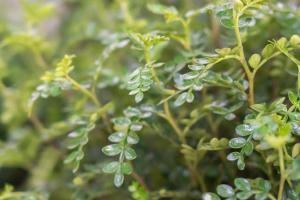Introduction
Slugs are notorious plant pests that can cause a lot of damage to gardens and potted plants. They are soft-bodied creatures that tend to feed on living plant material, leaving behind a trail of destruction. Many gardeners and plant enthusiasts are concerned about the potential harm slugs can cause to potted plants, and whether or not they should take action to prevent or control slug infestations.
Do Slugs Hurt Potted Plants?
Yes, slugs can certainly hurt potted plants. Slugs are voracious feeders that can quickly devour tender young plant shoots and leaves. They are especially attracted to plants that are succulent, tender, and moist. Some of the common potted plants that are vulnerable to slug attacks include hostas, pansies, petunias, and strawberries.
When slugs feed on potted plants, they create large holes in the leaves, compromise the plant's structural integrity, and reduce its overall health and attractiveness. In severe cases, slug damage can kill the plant or cause it to become stunted and weakened.
How Slugs Attack Potted Plants
Slugs typically attack potted plants at night or in damp, humid conditions. They move slowly and leave a telltale trail of slime behind them. Once they locate a plant that suits their taste, they will begin munching on the leaves, stems, and flowers.
Slugs are particularly damaging to young, vulnerable plants, as they have not yet developed the ability to defend themselves against predators. The slimy creatures can quickly destroy new seedlings, and even established plants can fall victim to their rapacious feeding habits.
Symptoms of Slug Damage
There are a number of symptoms that can indicate slug damage to potted plants. Some of the most common signs include:
Holes in leaves and flowers
Brown streaks or slime trails on plant surfaces
Leaves that appear chewed or shredded
Irregularly shaped holes or notches in leaves
Yellowing or wilting of leaves
If you notice any of these symptoms, it's important to take action to prevent further damage to your potted plants.
Preventing and Controlling Slug Damage to Potted Plants
Thankfully, there are several methods that can help prevent and control slug damage to potted plants. Some of the most effective measures include:
Remove hiding places: Slugs like to hide in damp, cool areas during the day. Try to reduce their hiding places by clearing away leaf litter, old flower heads, and any other debris around your potted plants.
Use barriers: Place a copper strip or sticky tape around the rim of your plant pots. Slugs are deterred by the feeling of copper and will avoid coming into contact with it.
Handpick the slugs: Go outside at night with a flashlight and pick off any slugs you see on your potted plants. Dispose of them in a bucket of soapy water or take them far away from your garden and release them.
Use natural predators: Encourage natural predators like birds, toads, and hedgehogs to your garden. They will help control the slug population.
Use slug pellets: If all else fails, you can use slug pellets to control the slug population. Be sure to use them only as directed and keep them away from pets and children.
Conclusion
Slugs can certainly cause a lot of damage to potted plants, but with the help of preventative measures and control methods, you can keep your plants healthy and happy. By removing hiding places, using barriers, handpicking slugs, encouraging natural predators, and using slug pellets as a last resort, you can protect your potted plants from the harmful effects of slugs.

 how many times do yo...
how many times do yo... how many planted tre...
how many planted tre... how many pine trees ...
how many pine trees ... how many pecan trees...
how many pecan trees... how many plants comp...
how many plants comp... how many plants can ...
how many plants can ... how many plants and ...
how many plants and ... how many pepper plan...
how many pepper plan...
































